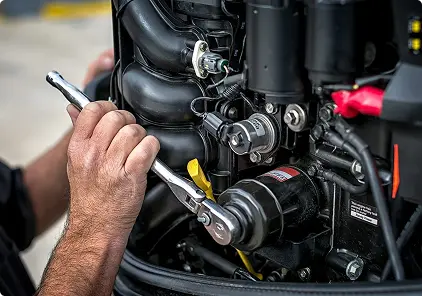Few things can disrupt a day on the water faster than an overheating engine. Boat engines are designed to run efficiently under the right conditions, but when the cooling system fails, temperatures can rise quickly, leading to serious mechanical damage. Knowing effective boat engine overheating solutions and understanding how to fix a marine cooling system are essential skills for any boat owner who wants to avoid costly repairs and downtime.
Common Causes of Boat Engine Overheating
Before diving into boat engine overheating solutions, it’s important to understand why the problem occurs. Most overheating issues stem from a failure in the cooling system. Common causes include:
- Blocked water intakes: Debris such as seaweed, plastic, or sand can clog the intake grates, restricting water flow.
- Damaged impeller: The impeller, responsible for drawing water into the cooling system, can wear out or break over time.
- Coolant leaks: In closed cooling systems, low coolant levels can cause the engine to run hot.
- Corroded heat exchangers: Over time, salt and mineral buildup can reduce heat exchange efficiency.
- Broken belts or hoses: Worn or cracked belts can prevent the water pump from operating effectively.
Effective Boat Engine Overheating Solutions
When faced with rising engine temperatures, quick action can prevent further damage. The first step in boat engine overheating solutions is to shut down the engine safely and allow it to cool. Never attempt to open the coolant cap or perform immediate repairs while the engine is still hot. Once cooled, inspect for visible leaks, loose connections, or obstructions in the water intake.
If the problem persists, check the impeller. A worn or melted impeller is a common culprit and should be replaced immediately. Regular impeller inspections are one of the most reliable boat engine overheating solutions, as preventive maintenance can stop major failures before they start.
For closed cooling systems, always verify that coolant levels are adequate. If coolant is leaking, inspect hoses, clamps, and the heat exchanger. Flushing the cooling system to remove mineral deposits or salt buildup can also improve efficiency and help prevent future overheating.
How to Fix a Marine Cooling System
Learning how to fix a marine cooling system is an important part of boat ownership. Start by understanding your specific system type—raw water cooling or closed-loop cooling.
- For raw water systems: Check that the intake valve is open and free from debris. Clean strainers regularly to prevent clogging, and replace impellers annually.
- For closed systems: Maintain proper coolant levels and inspect the heat exchanger for corrosion or blockage. If overheating persists, professional service may be required to flush and pressure-test the system.
Routine maintenance is the best defense. Cleaning, flushing, and inspecting the system regularly can extend your engine’s lifespan and ensure reliable performance.
Conclusion
By understanding boat engine overheating solutions and how to fix a marine cooling system, you can protect your investment and enjoy trouble-free boating. Regular maintenance, timely inspections, and quick responses to warning signs keep your engine running smoothly and your adventures uninterrupted. When in doubt, consulting a marine technician ensures your cooling system operates at peak efficiency—keeping you safe and your boat performing its best.

